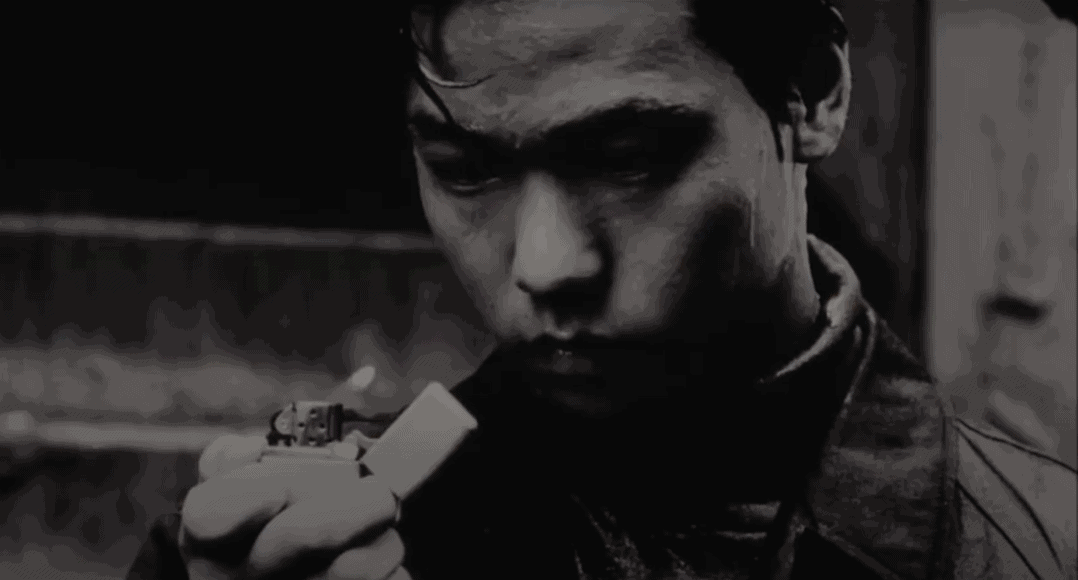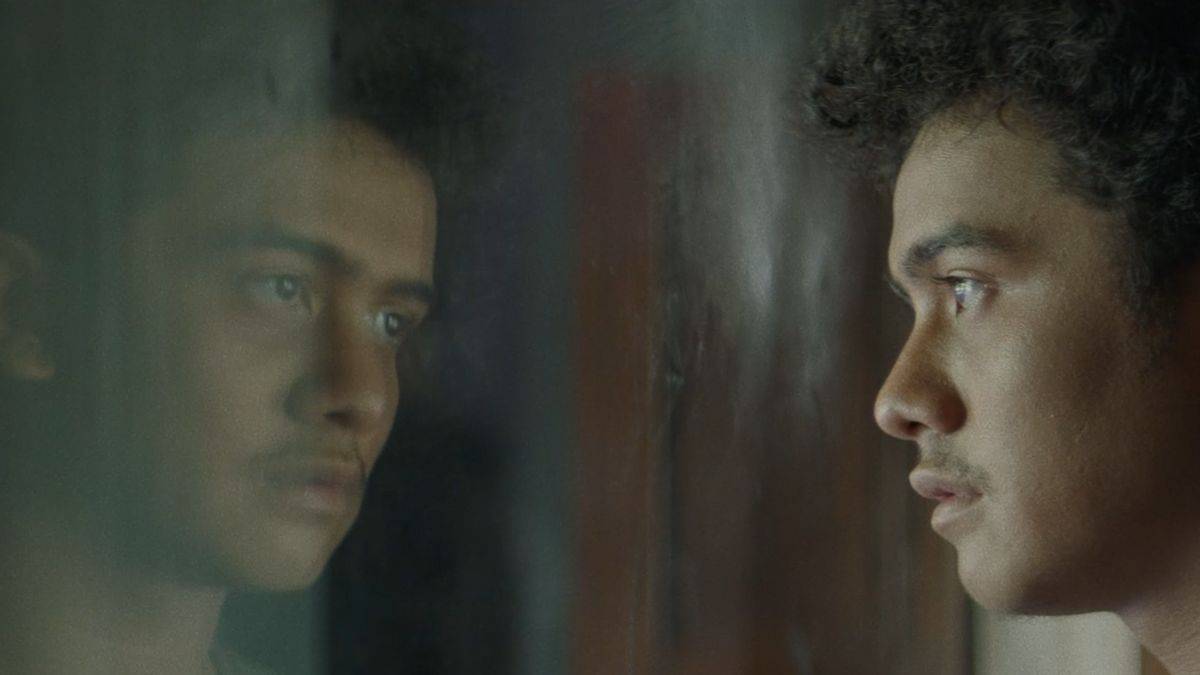The 1995 South Korean film “A Single Spark” is the second collaborative project between the highly political New Wave director Park Kwang-su and the writer and director Lee Chang-dong. The movie is co-written by Hur Jin-ho of “Christmas in August” fame and co-produced by The Jeon Tae-il Commemorative Association. It has won numerous awards in Korea and abroad.
The film depicts the real story of Jeon Tae-il (played by Hong Kyoung-in), a young tailor at a garment factory in the Pyung-hwa market in Seoul who committed suicide by self-immolation in November 1970 as a means of protest against the abject working condition in his country, sparking the creation of the labor unions in South Korea and consequently, the anti-government and pro-democracy movements in the country. His story is told through black and white flashbacks from the perspective of Kim Young-su (played by Moon Sung-keun), a law graduate and himself a wanted man by the Park Chung-hee regime and the KCIA for his supposed “Communist” beliefs, who starts writing a book about Jeon Tae-il's struggles five years after the martyr's death.

As Young-su's involvement in the story develops, we start seeing more and more of the inhuman working conditions in Korea during the rapid economic progress of the 1960s and 1970s, which started the chasm between the rich and the poor in the Korean society that exists up to the present days. Though achieved through the backbreaking toil of underage girls injected with amphetamines so they can work longer hours, the workers do not feel any of the benefits of raising living standards in the country, but die of tuberculosis or exhaustion instead. A simple tailor in one of the thousand sweatshops in the market, Tae-il soon starts fighting for the rights of his fellow co-workers. Although non-political at the beginning, his struggle becomes more and more political in nature, as his efforts are repressed from the government and deemed unpatriotic, culminating with his suicide and the subsequent creation of anti-government pro-people movements through the country and their brutal suppression by the military dictatorship.
The direction by Park Kwang-su and script by Lee Chang-dong is masterful and complex though somewhat slow and subdued. Yet, each scene and movement, even word, is incredibly dense with symbols that communicate with the viewers on numerous different levels, as they convey not only about the historical context of the two-story arcs, but also the convictions and backgrounds of each of the characters and also the political views of the people that made the movie and the Kim Dae-jung government. This makes the film both highly interesting for everyone versed in the history and culture of the country but also a very good introduction to the Korean labor movement and subsequent pro-democracy movements.
The complexity and subtlety of the film are seen in the fictional character of Kim Young-su, who, on a surface level is used as a character with whom and through whose eyes the viewers can see the history of the labor movement and with whom they can identify. The choice of a writer affiliated with the Seoul National University (SNU) is done also, so the makers of the film can show the protests in the university against Park Chung-hee's regime and as a result, the politicization of the labor movement started by Jeon Tae-il and its spread to university students. Yet, on a deeper level, it also speaks about the shame felt by the academic elite of the country, who, though supposed leaders of the people, have not helped the workers in their initial fights against the business owners and the government at large. As such, the protests at SNU and the writing of a text by a member of the elite who, through the process of his research, begins to inhabit Jeong Tae-il's world, can be seen as just that, a way through which they try to right their wrongs by remembering him. This is a feeling still felt by numerous Korean pro-democracy scholars living during that time, as poignantly shown by Rhyu Si-min in his book “What is a Nation?”
Moon Sung-keun and Hong Kyoung-in are both great in their portrayal of Kim Young-su and Jeon Tae-il, respectively. Moon plays his character with a reserved inquisitiveness befitting a scholar, which develops into a kind of quiet obsession and even identification with Tae-il as the film progresses. However, as great as Moon is, the real star of the show is Hong Kyoung-in who simply disappears in his portrayal of the eponymous character. He plays the young man with the intense sincerity of a person who believes he can make the unbearable lives of his fellows better. Yet, as the story progresses and the character starts seeing the futility of his actions and their insignificance against the powerful and abusive companies backed by the state, his expression and demeanor changes subtly to a more pained, yet detached one, showing the internal anguish that Jeon Tae-il experiences. This culminates in the chilling scene of the preparation of his act of ultimate protest, which Hong Kyoung-in plays with an intense conviction and clarity of mind mixed with resignation.

Just like the directing, writing, and acting, the award-winning cinematography by Yoo Young-kil's is stunningly beautiful, yet not showy, with both stories having an aesthetic fitting each narrative arc. The black and white scenes of Jeon Tae-il's arc are shot in high contrast with deep blacks counterbalanced by pure whites. This results in rather sharp-looking images that strengthen the story's juxtaposition between the selfless and pure Jeon Tae-il and the evil and abusive factory owners and corrupt officials and journalists.
The color segment, on the other hand, is much softer visually, with a palette that leans towards greenish-brown. Yet, this isn't the green of flowers and life, but rather the muted darkish one of decay. This, coupled with numerous shots of still bodies of water and darkly lit stuffy interiors, creates the feeling of suffocation and even corrosion and mold that represents the decay of the Park Chung-hee's regime. This results in a visually evocative film that adds another layer of depth to the already highly complex and nuanced script.
Delivering a message as timely during the time of its creation as it is now, when the security and future of the low-wage laborers in the country are still precarious, as seen by the recent tragedy in Icheon, the movie is a classic among movies about labor movements and a timeless lesson about the dangers of greed and the senseless economic progress.















